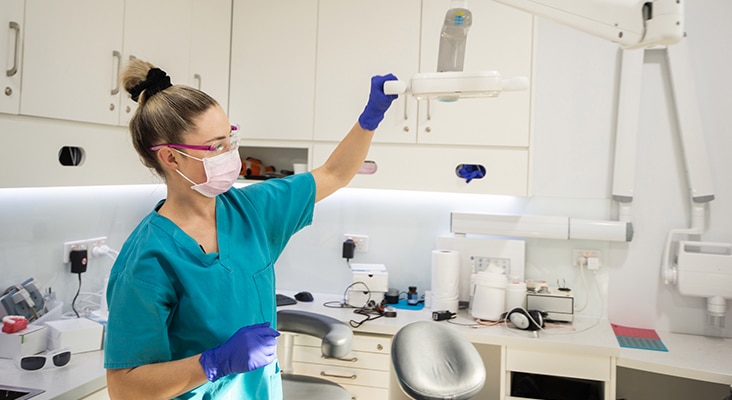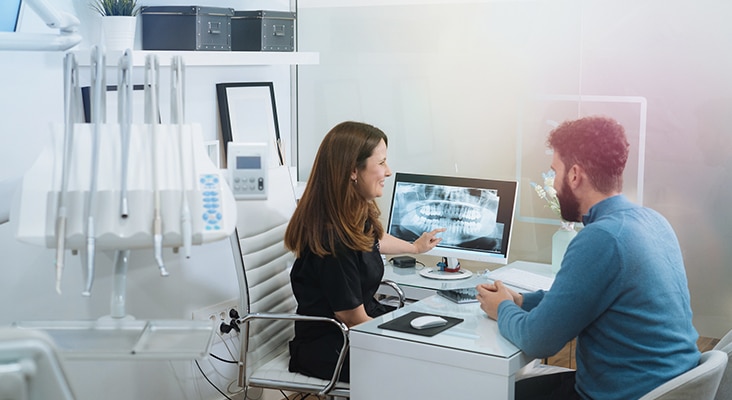Dental Hygienists Do Perform Diagnostics
In 2016, the American Dental Hygienists’ Association (ADHA) updated its standards for clinical practice.

In 2016, the American Dental Hygienists’ Association (ADHA) updated its standards for clinical practice. The section on dental hygiene diagnosis (DHDx) was expanded to recognize that dental hygienists provide multiple diagnoses for their patients, and use their diagnoses to formulate care plans and make intraprofessional and interprofessional referrals. In November 2017, the United States Office of Management and Budget released a revised Standard Occupational Classification for 2018. This classification system places all workers into one of 867 occupations and is used by federal agencies. In the past, dental hygienists were classified as “Health Technologists and Technicians.” However, dental hygienists are newly classified as “Healthcare Diagnosing or Treating Practitioners,” the same category as dentists, physicians, pharmacists, registered nurses, physical therapists, and other health care providers and diagnosticians.
Photo Credit: VMJones / E+

Patient-Centered Care
As dental hygiene practice is based on patient-centered care, communicating the dental hygiene diagnoses helps the patient understand why particular dental hygiene care and intra- and interprofessional referrals are beneficial. In 2015, Zill et al conducted a systematic review and developed a model for patient-centeredness that included 15 dimensions. The results indicated that two of the most important dimensions were “patient involvement in care” and “clinician-patient communication.” When dental hygienists effectively communicate dental hygiene diagnoses, the patient is equipped with the information necessary to become involved in his or her own care, following through on recommended dental hygiene treatment and referrals to other healthcare professionals. The subsequent case studies demonstrate the inclusive and extensive nature of DHDx.
Photo Credit: MJPS / iStock / Getty Images Plus

Key Concepts
There are key concepts to appreciate related to DHDx. First, diagnosis links assessment to patient-centered care. Patients should expect a summary of the assessments performed and clear DHDx that integrate clinical information, symptoms, examination findings, and test results. This process involves diagnostic reasoning and labeling of patient problems, or diagnoses, which helps to shape both the clinician’s and the patient’s understanding of his or her conditions, and facilitates communication among health care team members and the patient. DHDx must be comprehensive in nature; therefore, multiple diagnoses are appropriate. Narrowing the diagnoses to one aspect is unnecessarily limiting and does not represent the patient’s needs or the abilities of the practitioner and scope of practice. As the previously mentioned cases demonstrate, there are numerous possibilities for diagnoses.
Photo Credit: Eva-Katalin / E+

Management Reasoning
In addition to the clinical reasoning associated with DHDx, the dental hygiene practitioner must then address management reasoning. Once the DHDx is presented, the care plan is addressed with the patient. This process involved prioritization, shared decision making, and monitoring. Patient preferences, societal values, logistical constraints, resource availability, and cultural considerations influence management decisions leading to multiple pathways for acceptable treatment outcomes. Treatment plans are fluid and dynamic requiring ongoing monitoring and adjustments. As the patient progresses through the care plan, the diagnosis might subsequently change over time (periodontitis and inflammation in remission); therefore, the care plan will need to be adjusted accordingly.
Photo Credit: Creatas Images / Creatas / Getty Images Plus

Dental Hygienists CAN
Dental hygienists must stop saying they “cannot diagnose.” The standards for clinical dental hygiene practice clearly indicate that DHDx is a responsibility of the dental hygienist. While one profession might claim that another group cannot diagnose, there is no monopoly on the use of diagnostic terminology. What is clear is that it is important to remain within one’s scope of practice for treatment.
Photo Credit: nautilus_shell_studios / iStock / Getty Images Plus

Promoting Oral Health
DHDx provides an opportunity for clinicians to help patients better appreciate their oral health status and proposed care plans. Full scope of dental hygiene practice requires a link between the assessment data and the dental hygiene care plan. Every treatment planned should have a DHDx. Dental hygienists need to acknowledge their role as diagnosticians and utilize the dental hygiene process of care in practice to ensure optimal health outcomes.

